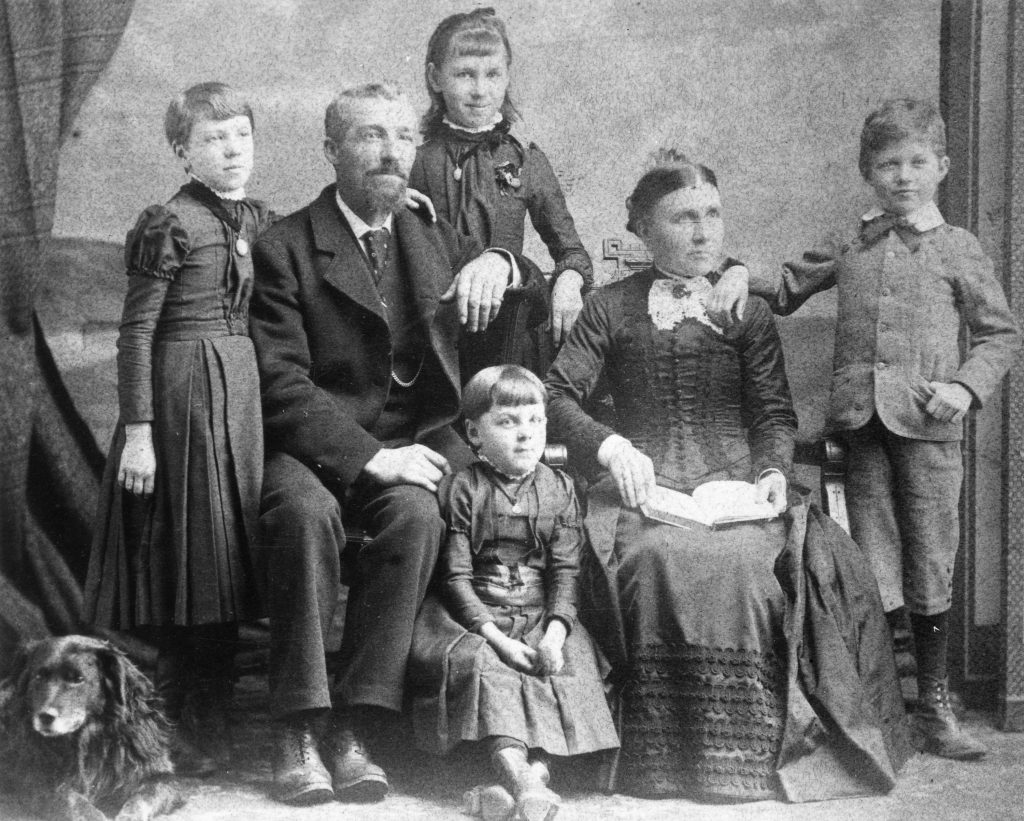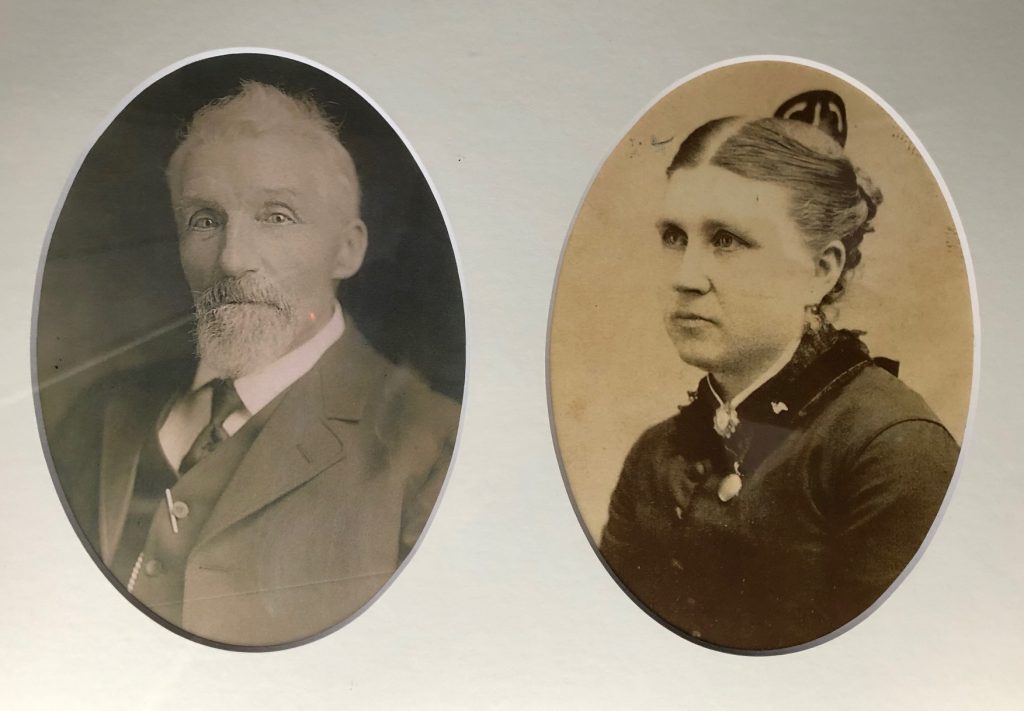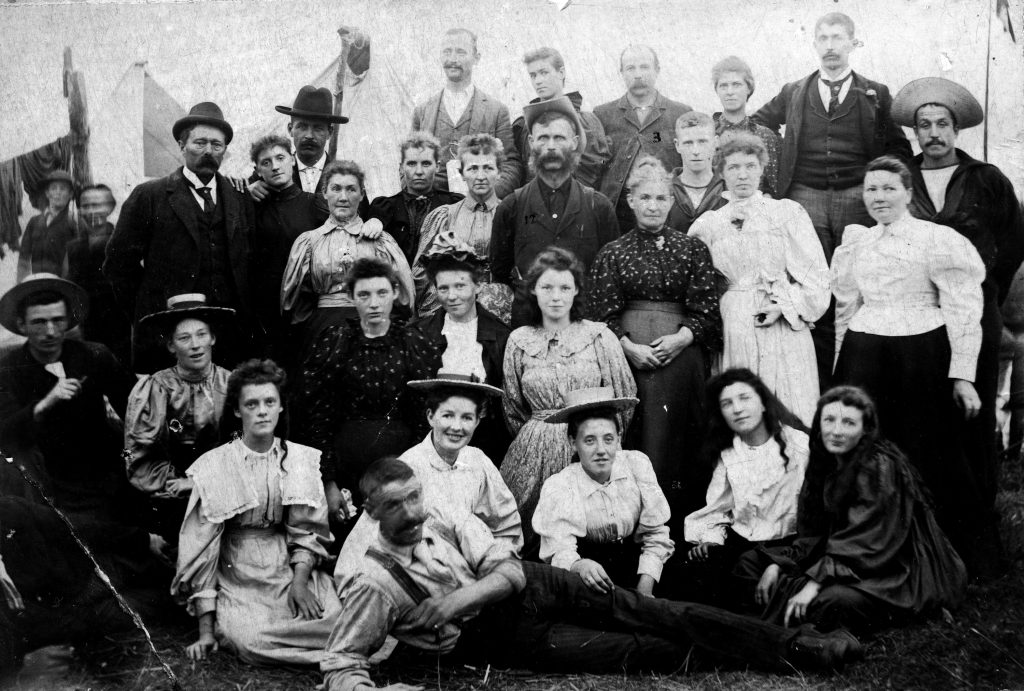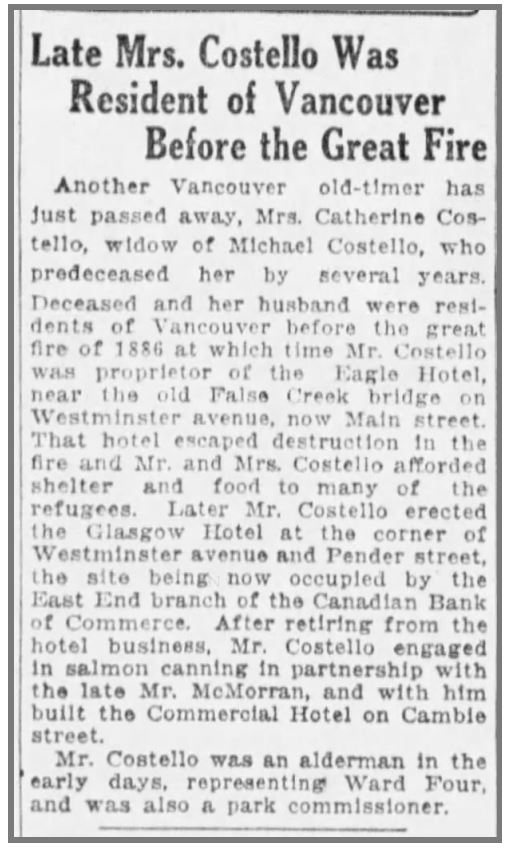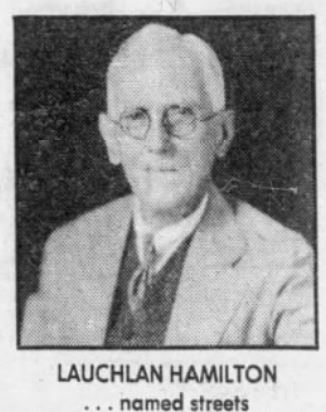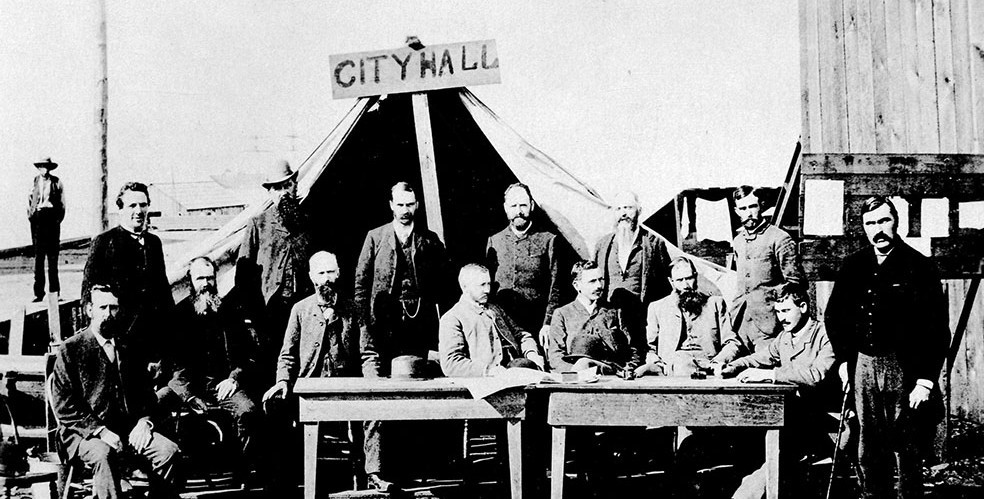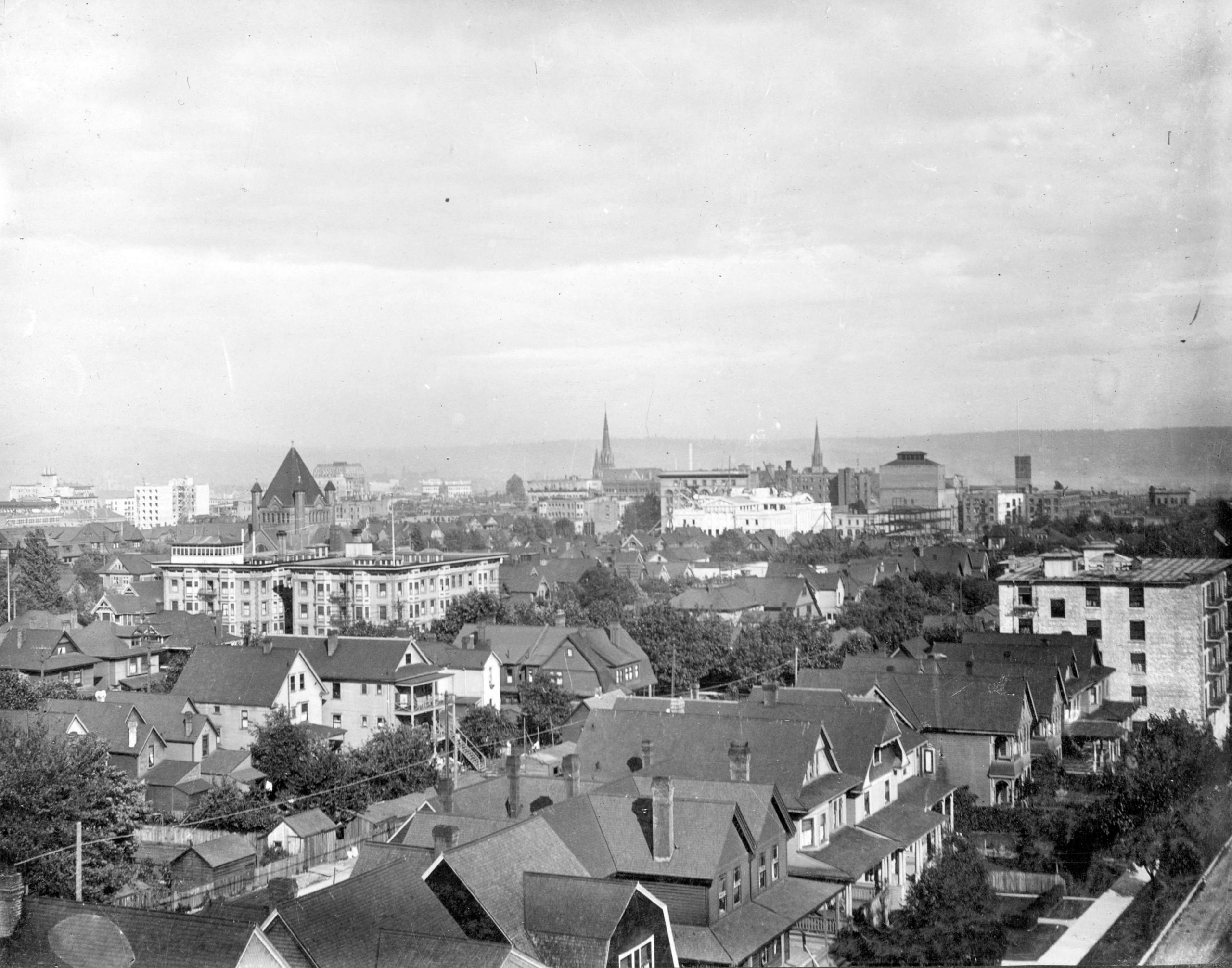
City of Vancouver Archives M-11-22
Henry & Elizabeth Anne Mole
The family who gave their name to Mole Hill
Henry Mole was born in St. Neots, Huntingdonshire, England on September 17, 1839. Henry arrived in Victoria in 1862 via the Panama Canal and headed for the goldfields. He moved to New Westminster in the later of that year. He and E.J. Betts applied for and received pre-exemption right for land at District Lot 314 in the area now known as Southlands. Henry built his home and farm there. By 1886 he also owned a piece of land at Lot 2, Block 3, Old Granville Townsite – now the Cordova Street side of the Army and Navy Store in Gastown.
Henry married Elizabeth Ann Cornish on November 7, 1881 in the Methodist Church in New Westminster. Elizabeth Ann had been married previously to Charles Paull and had two daughters with him. Paull was an engineer on the steamer “Maggie”. He died in early 1881. Elizabeth Ann was born in Redruth, Cornwall on May 16th, 1847, the daughter of William and Ann Cornish.
Herny and Elizabeth had twins, Annie and John, born on September 28, 1882. In 1889 Henry leased his farm and moved to a new house at 1025 Comox Street, near the block which now bears their name. The move was so that the children could attend school. Elizabeth Ann died on August 11, 1893, and in 1898, Henry returned to his farm after the children completed their schooling.
Henry was elected as “Councilman” for the Municipality of South Vancouver from 1894-99. He was a member of the board of works and from his earliest days in BC was involved with road construction. Henry’s son, John Mole, sold the family farmhouse to the Point Grey Golf and Country Club. Henry died on January 18, 1923, in Vancouver and is buried with his wife in Mountain View Cemetery.
Alexander Bethune
The Vancouver mayor who built five houses at Mole Hill
Between 1898 and 1990 Alexander Bethune (1852-1947) built five houses at 1157, 1159, 1163, 1169 & 1173 Pendrell Street, some with his business partner John S. Gordon.
Bethune was born in Peterborough Ontario, moving to Vancouver in 1890, establish a shoe store, Mills & Bethune, and later entering the building business.
Bethune served on Vancouver City Council 1900-1907 when he became Mayor. During his term, he was faced with the September 1907 Vancouver Vancouver riots. As Mayor, he permitted demonstrators from the Asiatic Exclusion League (of which he was a member) to hold a rally at city hall in which speeches were delivered in support of the prohibition of Asian immigration to the city. He also briefly prohibited immigrants from India entering the city, although he had no authority to prevent them landing and moving freely.
Catherine Costello
The first female owner of a Mole Hill house
Catherine Costello was the first resident and owner of 1103 Pendrell Street. She was born Catherine “Kate” Murray, in the United States in the 1850s (dates vary) and married Michael Costello in 1878. They moved to British Columbia in 1881, first to Oak Bay and then to Vancouver where they operated several hotels, including the Commercial Hotel at 340 Cambie (now Pub 340) where he established himself as a popular proprietor with his eldest son, John, as manager.
They lived in Mount Pleasant but when Michael died in 1901, leaving Kate with seven children, she moved from that area to the West End. She had 1103 Pendrell Street built in 1907 and lived there with her children, renting rooms to lodgers. The Costellos moved out of the property in 1917 but continued to own the property, operating it as a rooming house. Kate died in 1926 leaving an estate of $4,083.
Lauchlan Hamilton
The land surveyor who laid out the City of Vancouver & named the streets at Mole Hill
Lachlan Hamilton was born in Ontario in 1852. At 19 years old he was a member of the British North American Boundary Commission that was establishing the boundary between Canada and the United States. In 1880 he became the chief land surveyor for the Canadian Pacific Railway. In 1883 he arrived in the townsite of Granville and spent two years laying out the streets of the downtown peninsula that would later become the City of Vancouver.
Hamilton was given a free hand to choose names for most of the streets we know today. He firstly named Hamilton Street after himself, followed by Abbot, Cambie, Homer, Helmcken and Nelson Streets, after CPR officials or early BC politicians.
The streets of the West End had been drawn up and registered in the 1870s but never surveyed until Hamilton’s work. The four streets of Mole Hill, like most of the streets in the West End he named after locations he found on a map of the Pacific Northwest. Hamilton would have largely been unaware of the origins of these names, which were mostly named earlier in the 19th Century. For example he named Cardero Street after the Cardero Channel, which had been named after Josef Cordera, a draughtsman on Galiano’s 1792 expedition.
Hamilton was a council member on the first city council of Vancouver. He is pictured in the famous “tent” photograph of the council following the 1886 fire (see right).
In 1888, at the age of 36, Hamilton moved to Winnipeg to continue his role as chief surveyor for CPR. He died in Toronto 1941

